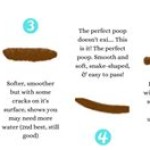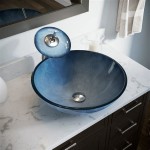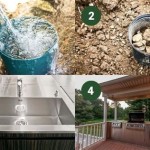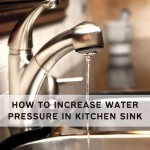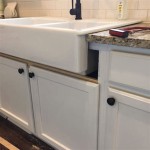Hose Adapter To Kitchen Sink: A Comprehensive Guide
Connecting a garden hose to a kitchen sink can be a practical solution for various tasks, ranging from filling large containers to cleaning items that are too cumbersome for the sink basin. This task necessitates a hose adapter specifically designed to bridge the gap between the standard garden hose threading and the faucet's connections. This article provides a comprehensive guide to understand the different types of adapters available, the factors to consider when selecting the right adapter, the installation process, and the potential issues and troubleshooting tips.
Understanding the Need for Hose Adapters
The fundamental reason for using a hose adapter lies in the incompatibility between standard garden hose threads and typical kitchen faucet configurations. Garden hoses typically employ a 3/4-inch Garden Hose Thread (GHT), a standardized thread commonly found on outdoor faucets and watering equipment. Kitchen faucets, on the other hand, often feature smaller, non-standard threads, or they utilize quick-connect mechanisms for accessories like sprayers. Trying to directly connect a garden hose to a kitchen faucet without an adapter will inevitably result in leaks and potential damage to both the faucet and the hose.
Adapters serve as the crucial intermediary, providing a secure and leak-proof connection. They achieve this by incorporating two distinct thread types: one that matches the kitchen faucet and another that matches the garden hose. This allows for a seamless transition, enabling the user to leverage the convenience of a garden hose within the kitchen environment.
Beyond simply connecting disparate threads, adapters also provide a degree of control over water flow. Certain adapters may include integrated shut-off valves or restrictors, allowing the user to regulate the water pressure and prevent potential overflow or splashing. This added functionality enhances the practicality and safety of using a hose adapter in the kitchen.
Types of Hose Adapters for Kitchen Sinks
The market offers a variety of hose adapters designed for kitchen sinks, each catering to specific faucet types and user requirements. Understanding the different types allows for informed decision-making and ensures compatibility with the existing kitchen setup.
Threaded Faucet Adapters: These are the most common type of hose adapter and are designed for faucets with external or internal threads. They typically consist of a threaded collar that screws onto the faucet spout, coupled with a threaded outlet compatible with a garden hose. These adapters often come with multiple thread sizes or rubber sleeves to accommodate different faucet dimensions.
Quick-Connect Adapters: These adapters are designed for faucets equipped with quick-connect mechanisms, often found on faucets with pull-down or pull-out sprayers. They feature a quick-connect fitting that snaps onto the faucet spout, providing a secure and leak-proof connection. The other end of the adapter features a standard garden hose thread.
Universal Faucet Adapters: These adapters are designed to fit a wide range of faucet types, including those without standard threads. They typically feature a rubber sleeve or clamp that secures the adapter to the faucet spout. While versatile, these adapters may not provide as secure a connection as threaded adapters and are more susceptible to leaks.
Faucet Aerator Adapters: These adapters replace the existing aerator on the faucet. The adapter features a thread that screws into the faucet spout (where the aerator was) and has a male hose thread to attach the garden hose. These are generally very easy to install and are a good option when the faucet thread is the right size.
Diverter Valve Adapters: These are slightly more complex, these adapters install between the faucet spout and the water supply pipes. They allow you to divert water flow from the faucet to the garden hose. Usually these require some plumbing knowledge to install but offer a more permanent solution.
Factors to Consider When Choosing an Adapter
Selecting the right hose adapter for a kitchen sink involves careful consideration of several factors to ensure compatibility, functionality, and durability. Neglecting these factors can lead to leaks, damage to the faucet, or simply an unusable adapter.
Faucet Type and Thread Size: The most crucial factor is the type of faucet and its thread size. Identify whether the faucet has external or internal threads. If it has neither, a universal adapter might be necessary. Accurately measure the thread size of the faucet spout to ensure a proper fit. Using the wrong size adapter can damage the faucet threads and cause leaks.
Material: The material of the adapter plays a significant role in its durability and resistance to corrosion. Brass adapters are known for their durability and resistance to corrosion, making them a reliable choice for long-term use. Plastic adapters, while more affordable, may be less durable and more prone to cracking or leaking. Stainless steel offers a good balance of durability and corrosion resistance.
Ease of Installation: Consider the ease of installation, especially if plumbing experience is limited. Threaded adapters are generally easier to install, requiring only a wrench to tighten them onto the faucet spout. Quick-connect adapters are even simpler, requiring only a snap-on connection. Universal adapters may require more careful adjustments to ensure a secure fit.
Water Pressure and Flow Rate: Evaluate the expected water pressure and flow rate. If high water pressure is anticipated, choose an adapter made of durable material and with a secure connection mechanism. Consider adapters with integrated shut-off valves or restrictors to regulate water flow and prevent splashing. The diameter of the adapter's internal passage should be appropriate for the desired flow rate.
Intended Use: Consider the intended use of the hose connection. For infrequent, light-duty tasks, a basic plastic adapter might suffice. For more frequent or demanding applications, such as filling large tanks or cleaning heavily soiled items, consider a more durable brass or stainless steel adapter with a secure connection mechanism.
Installation Process
The installation process for a hose adapter generally involves a few straightforward steps. However, it's important to follow these steps carefully to ensure a secure and leak-proof connection. Before beginning, gather the necessary tools, including a wrench (adjustable or appropriate size), Teflon tape, and potentially a rubber sleeve for a tighter fit.
Preparation: Begin by turning off the water supply to the kitchen faucet. This prevents accidental water spillage during the installation process. Remove the existing aerator or any other attachments from the faucet spout. Clean the faucet spout thoroughly to remove any debris or mineral deposits that might interfere with the adapter's connection.
Applying Teflon Tape: Wrap Teflon tape clockwise around the threads of the faucet spout. The Teflon tape creates a sealant that helps prevent leaks. Apply several layers of tape, ensuring that the threads are adequately covered. Avoid applying excessive tape, as this can make it difficult to tighten the adapter onto the faucet.
Connecting the Adapter: Carefully align the adapter with the faucet spout and begin threading it on by hand. Ensure that the adapter is properly aligned to avoid cross-threading, which can damage the threads on both the faucet and the adapter. Once the adapter is hand-tightened, use a wrench to tighten it further. Avoid over-tightening, as this can damage the adapter or the faucet.
Testing for Leaks: After the adapter is securely installed, turn on the water supply to the kitchen faucet. Carefully inspect the connection between the adapter and the faucet spout for any leaks. If leaks are detected, turn off the water supply and tighten the adapter further. If leaks persist, remove the adapter, reapply Teflon tape, and repeat the installation process.
Connecting the Hose: Attach the garden hose to the adapter's hose thread. Ensure that the hose is securely connected and that there are no kinks or bends in the hose. Turn on the water supply and test the connection for leaks. If leaks are detected, tighten the hose connection or replace the hose washer.
Troubleshooting Common Issues
Despite following the correct installation process, certain issues may arise when using a hose adapter for a kitchen sink. Addressing these issues promptly can prevent further damage and ensure a reliable connection.
Leaks at the Faucet Connection: Leaks at the connection between the adapter and the faucet spout are a common issue. This can be caused by insufficient Teflon tape, cross-threading, or an improperly sized adapter. To resolve this issue, turn off the water supply, remove the adapter, reapply Teflon tape, and ensure that the adapter is properly aligned before tightening it onto the faucet spout. If the adapter is the wrong size, replace it with a compatible model.
Leaks at the Hose Connection: Leaks at the connection between the adapter and the garden hose can be caused by a worn or damaged hose washer, an improperly tightened connection, or a damaged hose thread. Replace the hose washer with a new one, tighten the hose connection securely, and inspect the hose thread for any damage. If the hose thread is damaged, replace the hose.
Low Water Pressure: Low water pressure can be caused by a clogged adapter, a kinked hose, or low water pressure in the supply line. Inspect the adapter for any debris or mineral deposits that might be obstructing the flow of water. Straighten any kinks or bends in the hose. Check the water pressure at other faucets in the house to determine if the issue is with the supply line.
Adapter Corrosion: Over time, adapters can corrode due to exposure to water and minerals. Corrosion can weaken the adapter and cause leaks. To prevent corrosion, choose an adapter made of corrosion-resistant material, such as brass or stainless steel. Regularly inspect the adapter for signs of corrosion and replace it if necessary.
Difficult Installation: Difficulty installing the adapter can be caused by tight threads or an improperly sized adapter. Apply a small amount of lubricant to the threads to ease the installation process. Ensure that the adapter is the correct size for the faucet spout. If the adapter is too tight, use a wrench to gently loosen it before attempting to thread it onto the faucet.

Water Saving Adapter With Internal And External Threads For Faucet Aluminum Connector Bathroom Kitchen Sink Fittings Lazada Singapore

Garden Hose Pipe Connector Sink Faucet Adapter Universal Kitchen Mixer Tap Uk

3 Way Diverter Valve Water Tap Connector Kitchen Faucet Adapter Sink Splitter

How To Hook A Garden Hose Your Indoor Faucet De Ice Deck Thaw Containers Raised Beds Early

360 Degree Flexible Deluxe Double Swivel Kitchen Sprayer Sink Faucet Aerator Hose Adapter At 100 Piece In Navi Mumbai Id 20793530248

Universal To Garden Hose Pipe Connector Kitchen Bathroom Sink Water Tap Adapter Uk

Hozelock 2 In 1 Indoor Hose Pipe Connector

Kitchen Sink To Garden Hose Adapter

Kitchen Sink To Garden Hose Adapter

Easy Turn 2 Way Faucet Adapter Garden Hoselink Usa
